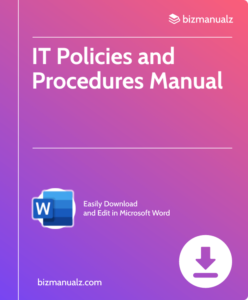What Are IT KPIs Key Performance Metrics?

Are you struggling to track and measure the success of your IT department? Do you feel overwhelmed by the various performance metrics available? In today’s fast-paced and constantly evolving technological landscape, it is crucial for businesses to effectively measure their IT performance to stay competitive. In this article, we will delve into the importance of key performance metrics for IT and how they can help you achieve organizational success. What Are IT KPIs Key Performance Metrics?
Why are Key Performance Metrics Important for IT?
Key performance metrics play a crucial role in IT as they offer valuable insights into the efficiency and effectiveness of IT systems and processes. These metrics are essential for identifying strengths, weaknesses, and areas for improvement within IT departments. By monitoring metrics like response time, uptime, and customer satisfaction, IT teams can evaluate their performance, pinpoint any bottlenecks, and make informed decisions to enhance their operations.
Additionally, key performance metrics allow IT departments to align their efforts with business objectives, demonstrate their value to stakeholders, and ensure efficient utilization of IT resources. Ultimately, these metrics empower IT organizations to drive performance enhancements and deliver favorable outcomes for the business.
What are the Different Types of IT KPIs Key Performance Metrics?
When it comes to measuring the success and effectiveness of IT operations, there are various key performance metrics that can be used. These metrics can be broadly categorized into three types: infrastructure metrics, application metrics, and service metrics. Each type of metric provides valuable insights into different aspects of IT performance. In this section, we will discuss the different types of key performance metrics for IT and how they can be used to evaluate and improve IT operations.
error
2. Application Metrics
Application metrics are crucial for evaluating the performance and effectiveness of software applications. To effectively measure application metrics, follow these steps:
- Identify relevant metrics: Determine the key performance indicators (KPIs) that align with your application’s goals, such as response time, error rate, and user satisfaction.
- Implement monitoring tools: Utilize tools like New Relic or Datadog to collect data and track the defined metrics in real time.
- Analyze and interpret data: Regularly review the collected data to identify trends, anomalies, and areas for improvement.
- Take corrective actions: Based on the analysis, implement changes to optimize application performance, enhance user experience, and address any identified issues.
In a real-life example, a software company noticed a significant increase in user complaints about slow response times. By analyzing their application metrics, they discovered a bottleneck in their database queries and optimized the queries, resulting in improved performance and increased user satisfaction.
3. Service Metrics
Service metrics are essential for evaluating the effectiveness and performance of IT services. To ensure accurate measurement of service metrics, follow these steps:
- Identify the key service metrics that align with your organization’s goals and objectives.
- Select the appropriate measurement methods and tools for collecting and analyzing the necessary data.
- Regularly monitor and track the service metrics to identify any trends or patterns.
- Compare the results against established benchmarks or industry standards to assess performance.
- Utilize the insights gained from analyzing service metrics to identify areas for improvement and prioritize initiatives.
By focusing on service metrics, organizations can pinpoint areas for improvement, make informed decisions, increase efficiency, and enhance customer satisfaction with their IT services.
How to Measure Key Performance Metrics for IT?
As the IT industry continues to evolve and become increasingly complex, it has become essential for organizations to effectively measure their performance in this field. In order to do so, it is important to understand the key performance metrics for IT and how to measure them. In this section, we will discuss the steps to effectively measure these metrics, including setting clear goals and objectives, choosing the right metrics, collecting and analyzing data, and monitoring and tracking progress. By following these steps, organizations can gain valuable insights into their IT performance and make informed decisions to drive success.
1. Set Clear Goals and Objectives
To effectively measure and improve performance in IT, it is important to set clear goals and objectives. This can be achieved by following these steps:
- Evaluate the current state: Assess the current performance and identify areas that need improvement.
- Define specific goals: Clearly define what you want to achieve with the metrics. Ensure they are measurable, attainable, relevant, and time-bound.
- Align with organizational objectives: Ensure that the goals and objectives align with the overall objectives of the organization.
- Communicate goals: Clearly communicate the goals and objectives to all relevant stakeholders to ensure a shared understanding.
- Break down goals: Break down the goals into smaller, actionable objectives to make it easier to track progress.
By following these steps, you can successfully set clear goals and objectives for key performance metrics in IT, allowing for effective measurement and improvement.
2. Choose the Right Metrics
Choosing the right metrics is crucial when measuring key performance in IT. Here are the steps to ensure you make the right choices:
- Define goals: Clearly outline the objectives you want to achieve with your chosen metrics.
- Consider relevance: Select metrics that align with your goals and provide meaningful insights.
- Balance: Choose a mix of leading and lagging indicators to gain a holistic view of performance.
- Simplicity: Avoid selecting too many metrics and focus on those that offer the most valuable information.
A company was struggling with slow website loading times. After analyzing various metrics, they determined that the server response time was the most important metric to focus on. By optimizing server configurations, they were able to significantly improve website performance and enhance user experience.
3. Collect and Analyze Data
- Collect relevant data: Gather data from various sources such as IT systems, software tools, and user feedback.
- Analyze data: Use analytical techniques, such as statistical analysis and data visualization, to gain insights and identify patterns in the collected data.
- Identify key metrics: Determine which metrics are most relevant for assessing performance and achieving goals.
- Establish benchmarks: Compare current performance against industry standards or previous performance to understand areas for improvement.
- Document findings: Record and document the analysis results and insights for future reference and communication.
Pro-tip: Regularly review and update the process of collecting and analyzing data to ensure accuracy and relevance of the data.
4. Monitor and Track Progress
Tracking and monitoring progress is crucial when measuring key performance metrics for IT. Here are the steps to effectively monitor and track progress:
- Set clear goals and objectives to ensure clarity and focus.
- Choose the right metrics that align with your goals and provide meaningful insights.
- Collect and analyze data regularly to track performance and identify areas for improvement.
- Continuously monitor progress by regularly reviewing the metrics and comparing them against the set targets.
In a similar tone, a true story highlights the importance of monitoring and tracking progress. A company implemented key performance metrics for their IT department, which resulted in increased efficiency, improved customer satisfaction, and informed decision-making. By closely monitoring and tracking progress, they were able to identify bottlenecks in their system and make necessary adjustments to achieve their goals.
What are the Benefits of Using Key Performance Metrics for IT?
Key performance metrics are crucial for any successful IT organization. By measuring and monitoring specific areas of performance, these metrics can provide valuable insights and guidance for improvement. In this section, we will discuss the benefits of using key performance metrics for IT, including how they can identify areas for improvement, inform decision-making, increase efficiency and productivity, and ultimately improve customer satisfaction. Let’s dive into how these metrics can help your IT team thrive.
1. Identifies Areas for Improvement
Identifying areas for improvement is crucial when using key performance metrics for IT. Here are steps to effectively identify and address areas that need improvement:
- Review the metrics and data collected to identify any trends or patterns indicating underperformance or inefficiencies.
- Conduct root cause analysis to identify the underlying causes of the identified issues.
- Collaborate with relevant stakeholders, such as IT teams and business departments, to gather insights and perspectives on the identified areas for improvement.
- Develop a plan of action with clear goals and strategies to address the identified issues.
- Implement the necessary changes or improvements based on the defined plan.
- Continuously monitor and track the progress of the implemented changes to ensure that the desired improvements are being achieved.
- Regularly reassess and refine the metrics used to measure performance to ensure that they remain relevant and aligned with organizational goals.
2. Helps Make Informed Decisions
Making informed decisions in IT is crucial for success, and key performance metrics play a vital role. To effectively use metrics in decision-making, follow these steps:
- Identify decision-making needs and goals.
- Choose the right metrics that align with your objectives and help make informed decisions.
- Collect and analyze data consistently to gain insights.
- Monitor and track progress regularly to make data-driven decisions.
Pro-tip: Ensure your metrics are relevant and provide actionable information to drive informed decisions. Regularly review and update your metrics to adapt to changing business needs and technological advancements.
3. Increases Efficiency and Productivity
To increase efficiency and productivity in IT, businesses can follow a systematic approach. Here are the steps to take:
- Identify bottlenecks: Analyze processes and workflows to pinpoint areas of inefficiency.
- Streamline procedures: Simplify and automate tasks using various tools and technologies.
- Optimize resource allocation: Ensure that resources are allocated effectively and efficiently.
- Train and empower employees: Provide training and resources to enhance skills and knowledge.
- Implement performance monitoring: Track and measure performance metrics to identify areas for improvement.
- Encourage collaboration: Foster a culture of teamwork and communication to enhance productivity.
By implementing these steps, businesses can improve efficiency and productivity in their IT operations, leading to better overall performance.
4. Improves Customer Satisfaction
Improving customer satisfaction is crucial for the success of an IT organization. Here are some steps to achieve this goal:
- Understand customer needs and expectations by conducting surveys and gathering feedback.
- Ensure prompt and effective communication with customers to address their concerns and provide timely updates.
- Provide excellent customer support by offering quick resolutions and maintaining a friendly and helpful attitude.
- Deliver high-quality products and services that meet or exceed customer expectations and ultimately improve customer satisfaction.
- Continuously monitor customer satisfaction through metrics like Net Promoter Score (NPS) or Customer Satisfaction (CSAT) scores to ensure ongoing improvement.
By following these steps, IT organizations can effectively improve customer satisfaction, leading to increased loyalty and positive word-of-mouth recommendations.
IT KPIs Key Performance Metrics
Key performance metrics are essential to the IT industry because they provide important information about how well IT systems and procedures are working. These metrics are crucial for pinpointing IT departments’ advantages, disadvantages, and potential improvement areas. IT teams may assess their performance, identify any bottlenecks, and make well-informed decisions to improve their operations by keeping an eye on metrics like response time, uptime, and customer satisfaction.
Frequently Asked Questions
What are Key Performance Metrics for IT?
Key Performance Metrics for IT are quantifiable measures used to evaluate the success or effectiveness of an organization’s technology-related initiatives. These metrics help IT leaders and stakeholders track progress, identify areas for improvement, and make data-driven decisions for their IT department.
Why are Key Performance Metrics important for IT?
Key Performance Metrics are important for IT because they provide a clear understanding of the performance and impact of an organization’s technology investments. By tracking these metrics, IT leaders can identify strengths and weaknesses, make informed decisions, and demonstrate the value of their department to upper management.
What are some common Key Performance Metrics for IT?
Some common Key Performance Metrics for IT include system uptime, response time, resolution time, customer satisfaction, cost per ticket, first call resolution rate, and mean time between failures. These metrics can vary depending on the specific goals and objectives of an organization’s IT department.
How are Key Performance Metrics for IT measured?
Key Performance Metrics for IT are typically measured using data and analytics tools, such as IT management software and performance monitoring systems. These tools collect and analyze data from various sources, such as network traffic, user interactions, and system logs, to provide insights into the performance of an organization’s IT infrastructure.
What are the benefits of using Key Performance Metrics for IT?
There are several benefits of using Key Performance Metrics for IT, including: improved decision making, increased efficiency and productivity, better alignment with business goals, enhanced communication and transparency, and the ability to identify and address issues before they become major problems.
How often should Key Performance Metrics for IT be reviewed and updated?
Key Performance Metrics for IT should be reviewed and updated regularly to ensure they are still relevant and aligned with the organization’s goals and objectives. This could be done on a monthly, quarterly, or annual basis, depending on the nature of the metrics and the pace of change within the organization’s IT department.
















Leave a Reply